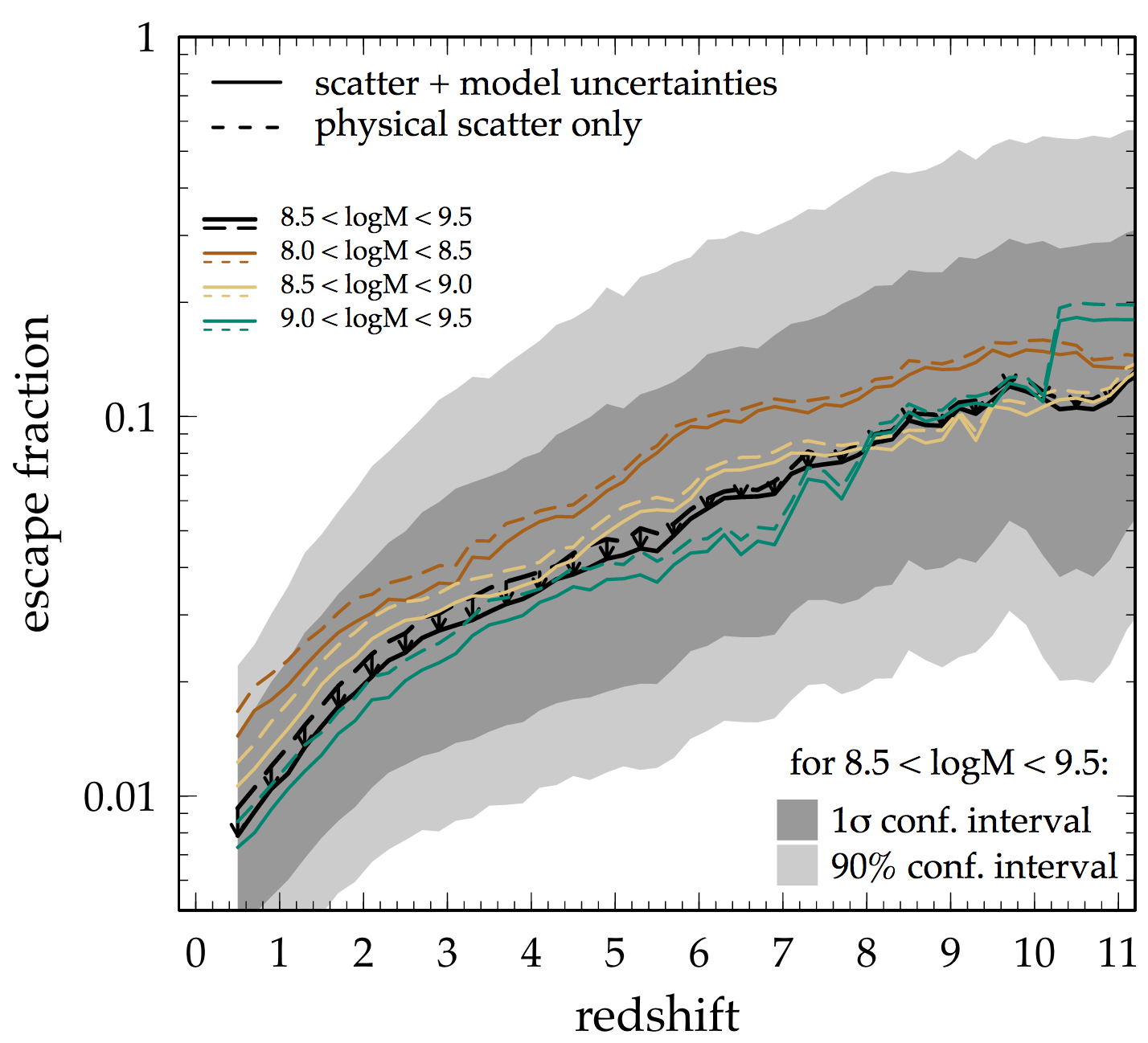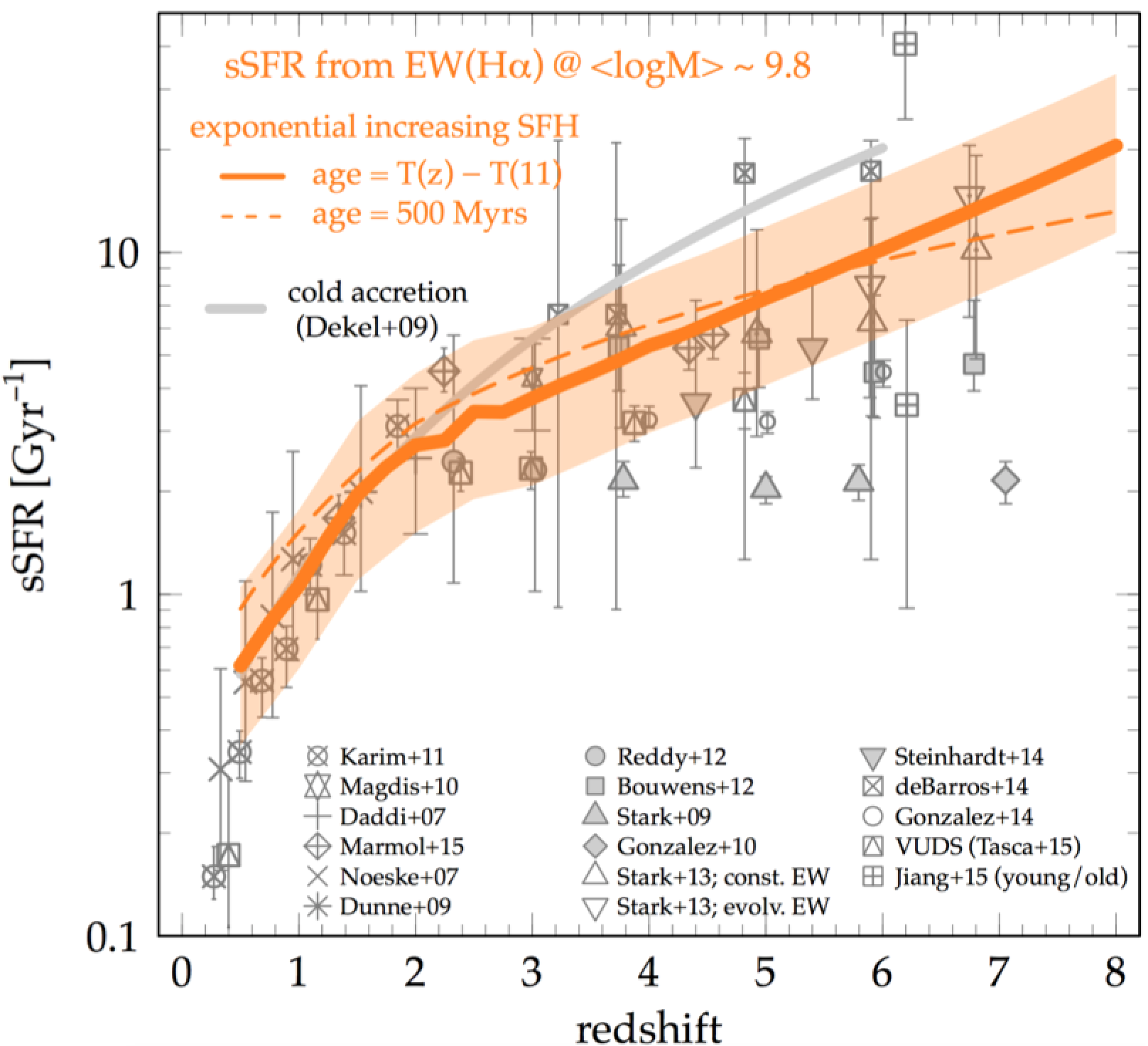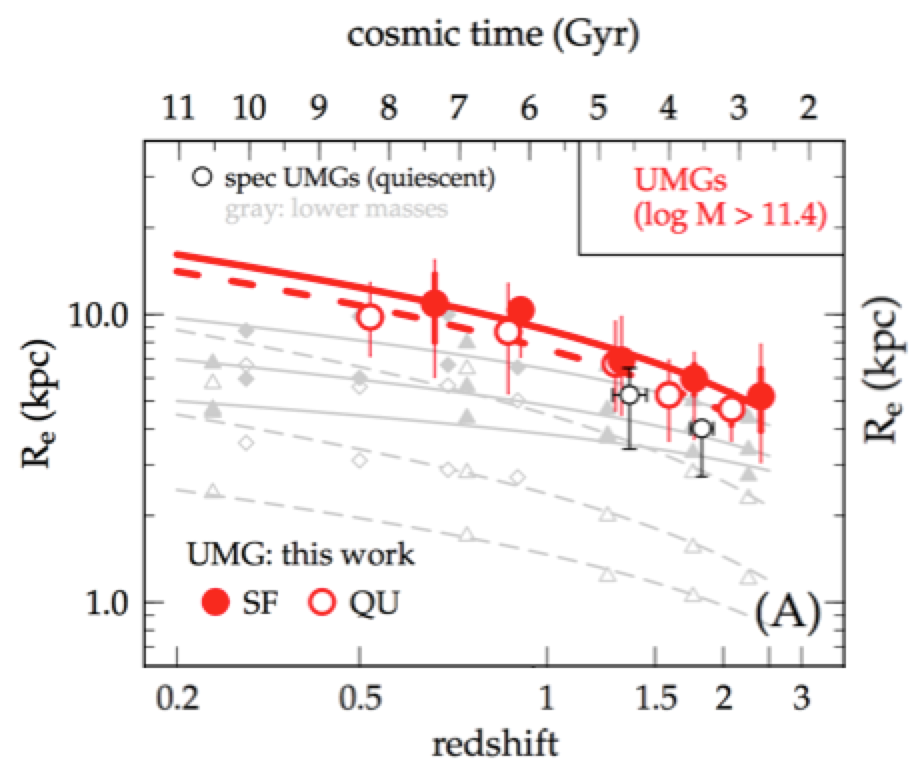
My research focuses on galaxy formation and evolution in the early universe as well as the processes that lead to the shutdown of star formation in massive galaxies at later times. Jump directly to a more detailed research overview .
I am the U.S. lead principal investigator of ALPINE, a 70-hour ALMA program to study the gas and dust properties of 122 main-sequence galaxies in the early Universe (z>4). All data are taken and we are busy with publishing the first papers! Learn more about ALPINE here and see below for more collaborations
Most of my time is spent as part of IPAC's brand-new Joint Survey Processing and Tech-Initiative team. We are building a science platform that provides to the community a user-friendly and fast access to and analysis of the high-volume datasets produced by missions during the next decade(s). On a technical level, I manage the Keck spectroscopic database for the COSMOS survey.
It is very exciting to be part of the (hopefully) the next generation of space missions! I am part of the science team for CASTOR, a Canada-led ultra-violet space telescope. Also, I am Science Operation Center deputy lead for ISCEA, a 25cm SmallSat that will revolutionize our understanding of galaxy clusters and galaxy evolution within and around them. See here fore more information.
I am a full member of several large collaborations with high impact over the next decades:
- Cosmic Evolution Survey (COSMOS): a 2-deg2 field with deep ancillary data in more than 30 imaging bands as well as more than 50,000 high-quality spectroscopic observations.
- Spitzer Large Area Survey with Hyper-Suprime-Cam (SPLASH): covers COSMOS with deep imaging from Spitzer at 3.6 and 4.5μm as well as optical bands from the Subaru Hyper Suprime-Cam
- The Cosmic Dawn Survey: a 50-deg2 multi-wavelength survey of the Euclid Deep and Calibration fields. Combines the Euclid/WFIRST Spitzer Legacy Survey (SLS) and Hawaii Two-0. In total more than 5000 hours of Spitzer imaging, more than 30 hours of optical imaging on Subaru Hyper Suprime-Cam and more than 5 nights of near-infrared Keck spectroscopy to carry out a precursor survey for Euclid, WFIRST, and JWST.
- Beyond Ultra-deep Frontier Fields And Legacy Observations (BUFFALO); a 101 orbit program to extend the Hubble Space Telescope (HST) coverage of six HST Frontier Field galaxy clusters.
My research in more detail:
What physical processes shape the interior of galaxies in the early Universe? Why are their properties so different compared to today's galaxies?
I study the ISM properties of high redshift galaxies by using the Hubble Space Telescope, the Keck telescopes, and the Atacama Large (Sub) Millimeter Array (ALMA). Furthermore, I study in detail resolved local analogs of high redshift galaxies to predict and explain the unresolved observations of high redshift galaxies. This led to the first observation based prediction of an increasing escape fraction of ionizing radiation in early galaxies. It suggests that galaxies in the early Universe have a different setup of H2 molecular regions in connection with a harder radiation from vigurous star formation. I am currently investigating the gas and dust distribution, infra-red properies, and dust temperatures of z=6 galaxies with ALMA observations and infra-red detected low redshift analogs. I am getting ready for observations with JWST that will be important to reveal in more detail what causes the differences in the physical properties compared to today's galaxies.
More on this topic:
Faisst et al. 2017b Barisic et al. 2017 Faisst et al. 2016a
Faisst 2016c
Masters et al. 2016
Faisst et al. 2014
Capak et al. 2013

The predicted escape fraction of ionizing radiation as a function of redshift derived from local analogs of high redshift galaxies. This is indicative of different ISM properties and setup of molecular clouds in high redshift galaxies as well strengthens our picture that these galaxies are responsible for reionizing the Universe at z>6. Figure taken from Faisst 2016c.
How do massive galaxies in the early Universe form and grow?
I am using Spitzer mid-infrared colors and large samples of spectrospic redshifts to study the emission line properties of massive galaxies at redshifts z > 3, which indicate the recent star formation history in these galaxies. Furthermore, I am using measurements of UV absorption lines obtained by the Keck telescope to estimate the gas-phase metallicities of galaxies at z = 5. The results suggest a fast and chaotic growth of these galaxies with mass doubling timescales of only a couple 100 million years. I will use these results as well as machine learning techniques to provide an ideal sample for the efficient follow-up with JWST to test these predictions in detail.
More on this topic:
Faisst et al. 2016a
Faisst et al. 2016b
Masters et al. 2015

The average specific star formation rate (sSFR) derived from Spitzer colors out to z>6 (orange) shows that these galaxies double their stellar masses on very short timescales (a couple of 100 million years). Figure taken from Faisst et al. 2016a.
What stops the formation of stars in massive galaxies? How does this process (quenching) change the structure of these galaxies?
I use an empirical model to describe the evolution of star-formation, stellar mass, and size of star forming massive galaxies and apply different processes that stop the formation of stars. By comparing this model to the observed stellar mass vs. size relation of quiescent galaxies I find that a central starburst (maybe triggered by a merger event) with a fast consumption of gas (the fuel for star-formation) fits best for very massive galaxies. Furthermore subsequent individual growth of the galaxies via mergers is necessary to meet the observations.
More on this topic:
Faisst et al. 2017a

The comparison of the size evolution of massive (logM > 11.4) star-forming and quiescent galaxies since z=2 encapsulates hints on the processes that stop the formation of stars at high masses. Figure taken from Faisst et al. 2017a.